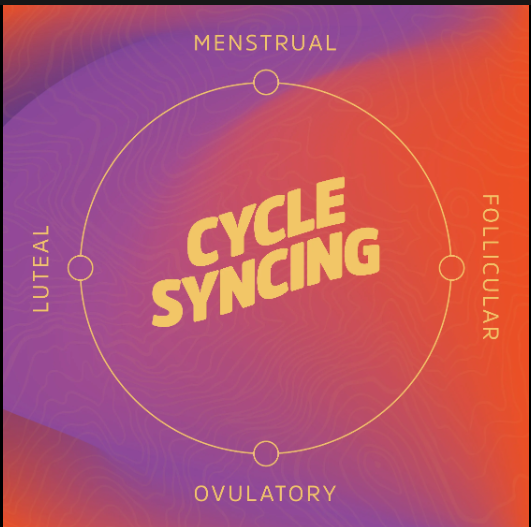Depending on where you are in your menstrual cycle, you should modify your exercise routine for cycle syncing. What you should know is as follows:
I’m sure you’ve heard of cycle syncing before. It has been making news for the past few years and has been discussed by health influencers on Instagram and TikTok. Integrative nutritionist Alisa Vitti popularized cycle syncing in 2014 and discussed it in her book “WomanCode.” The tactic was used in 2019 by American women athletes preparing for the World Cup, which could have contributed to its emergence in 2020s pop culture discussions.
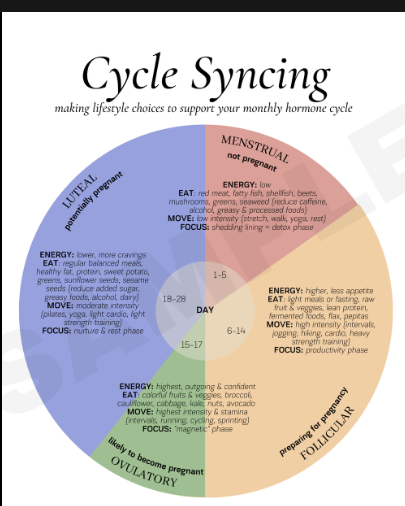
That “time of the month” can bring on physical discomfort, cravings, and lethargic behavior. Furthermore, although experiences differ, it’s usually not a very energetic period. Because of this, some athletes now schedule more intense workouts at other times of the month and less intense workouts during their menstrual cycle.
How to “Sync” your cycle syncing
Cycle syncing is a strategy based on the theory that scheduling your exercises to coincide with the four phases of the menstrual cycle can help balance your hormones and improve your performance in the gym. This is because the body has more energy to expend during ovulation and must conserve more energy during your period. Energy levels are either decreasing or increasing during the luteal and follicular phases, in preparation for the next phase.
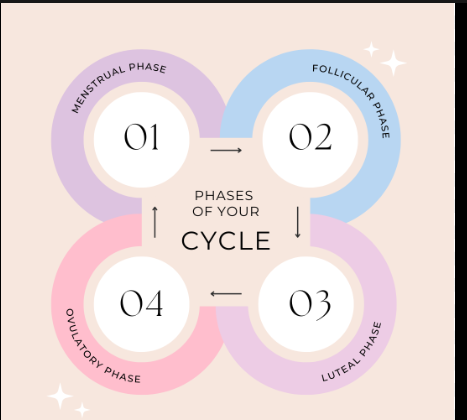
Before someone can start syncing their cycle with their workouts, they should have a good understanding of their own cycle. This includes, on average, how long their cycle lasts as well as how their body feels in different stages. The average length of a menstrual cycle is between 21 and 35 days, with the sweet spot for most people being 28 days in length. But the exact length can vary from person to person, as can feelings and energy levels during their cycle. And like the cycle itself, people’s athletic goals and interests are not one-size-fits-all.
With that in mind, here’s how cycle syncing could influence athletic performance throughout the different stages and vice versa.
Cycle-syncing workouts typically follow this pattern:
- Menstruation, mild exercise, or days off are recommended.
- It is advised to do high-intensity workouts, strength training, cardio, and follicular stage exercises.
- It is advised to engage in high-intensity workouts, strength training, cardio, or ovulation.
- Luteal stage, mild exercise, or days off are recommended.

Menstruation
The first phase of the cycle, known as menstruation, is when a person bleeds or has “a period.” If the person is not pregnant, this occurs when the body sheds the lining of the uterus due to hormonal fluctuations in estrogen and progesterone levels, which can range from high to low.
This lasts for three to seven days and happens once a month on average. Your body might feel lethargic and low on energy at this point. That’s because, in the words of Laura Fletcher, a coach and certified doula, she helps clients become more fertile.
“We are (excreting) iron; we are exerting energy.” Our bodies naturally want us to slow down and rest during this time, according to Fletcher. “We wish to treat ourselves with more kindness.”
Follicular stage
The follicular stage follows, lasting roughly a week. By raising hormone levels, this stage gets the body ready for ovulation and ultimately results in the production of an egg. In this stage, energy levels are also (usually) increasing because of the increase in both estrogen and follicle-stimulating hormone, or FSH.
According to Fletcher, this makes room for more strenuous exercise regimens like cardio or high-intensity interval training (HIIT), provided they align with an individual’s current abilities, interests, and other health objectives.
Ovulation
With a duration of approximately one day and occurring around day 14, ovulation is typically the shortest phase of the menstrual cycle. The luteinizing hormone, or LH, is released by the body at this point, telling the ovaries to release the egg.
Similar to the follicular stage, ovulation is typically accompanied by high energy levels. Now is a good time to work out at high intensity once more.
Luteal stage
The period from the time of ovulation until the cycle’s conclusion, which may be indicated by a period or a pregnancy, is known as the luteal phase. According to Fletcher, this is also a phase when energy conservation may be crucial, especially for those attempting to conceive.
Along with stress-relieving activities, she suggests exercising “similar to what we do during our menstrual cycle: gentle, soft, nurturing motion and movement.”
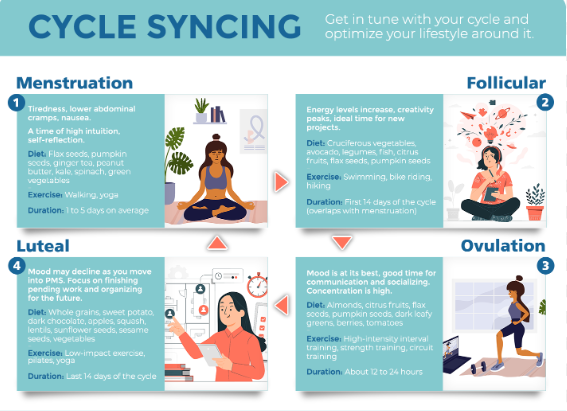
Why light exercise may be better during a heavy period
Although society can glamorize pushing the limits, experts say that the best way to take care of your body is often to listen to its needs, even if that means it’s time to pull back. Active bleeding puts the body in a vulnerable state, which can be most effectively addressed by reducing exertion and increasing care, says Fletcher.

In addition to changes like blood loss, iron loss, and energy depletion, the uterus also shifts in position during menstruation. Specifically, the cervix drops lower to the pelvic floor. Dr. Janelle Howell is a pelvic floor physical therapist and owner of V Rehab Services. Howell, also known as “Vagina Rehab Doctor“ on Instagram and Tik Tok, says that this change puts the pelvic organs in a more injury-prone position, which low-impact exercises like stretching and yoga can best support.
Exercises that strain the body, involve heavy lifting, or have a high impact can affect the pelvic floor, according to Howell.
That being said, menstruating individuals are not prohibited from engaging in high-intensity exercise during their menstrual cycle.
Howell asserts, “We can do anything at any time of the month.” However, during ovulation, our bodies are most ready to support us in thriving in those activities. Howell emphasizes the significance of concentrating on a healthy diet during menstruation, even more so than exercise. The most crucial thing, according to her, is to nourish the body because we are losing nutrients and blood.
Cycle Syncing Without Fertility Goals
Cycle syncing, or addressing over-exercising, isn’t exclusively for people trying to get pregnant. The methods can also have benefits for people who are not able to, or do not want to, have children.
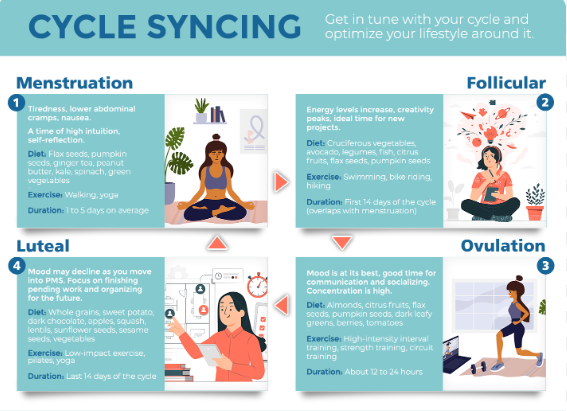
According to Fletcher, maintaining hormonal balance is “important and imperative at any stage of life.”
Other things that hormone balance can support are:
- Stress management and mental health
- Hunger cues and appetite
- A healthy metabolism.
- Energy levels.
If people notice that any of the above feels off, especially if they are getting light, irregular or no period, it could be a sign that hormones are out of balance. In these cases, it is most beneficial to seek help from a professional such as a doctor, dietitian, or fertility expert.
For people who are menstruating regularly and are otherwise feeling OK, cycle syncing could be a way to give them an extra energy boost at certain times of the month.
Cycle Syncing Support
People who want to start cycle-syncing their workouts can do so manually or use a period tracking app for support.
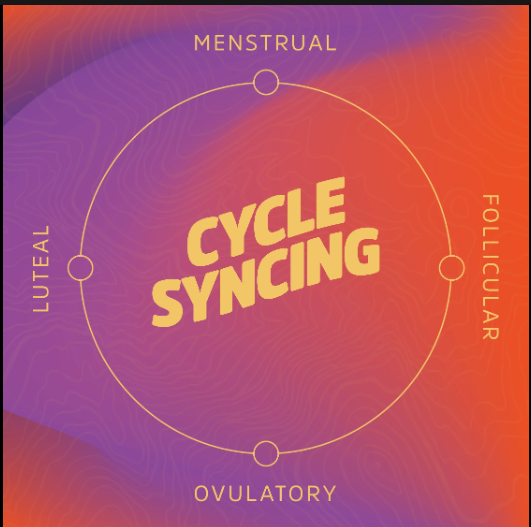
Brittany Hugoboom, the founder of 28 Wellness, an app that helps users track their menstrual cycle to optimize their health, suggests a period-tracking app can help people better understand their bodies without having to do all the groundwork alone.
In the 28 app and other tracking apps like it, users input data about their menstrual cycle, which the technology then uses to determine where the user is in their cycle, what’s happening to their body, “why it’s happening, and what they can do about it to feel better,” Hugoboom says. Cycle-synced workouts and nutrition suggestions are also included, she adds.
Also read-Blood clot: Exercising Safely After Having a Blood Clot For Better Health
Disclaimer: The opinions and suggestions expressed in this article are solely those of the individual analysts. These are not the opinions of HNN. For more, please consult with your doctor.
Images source-google







